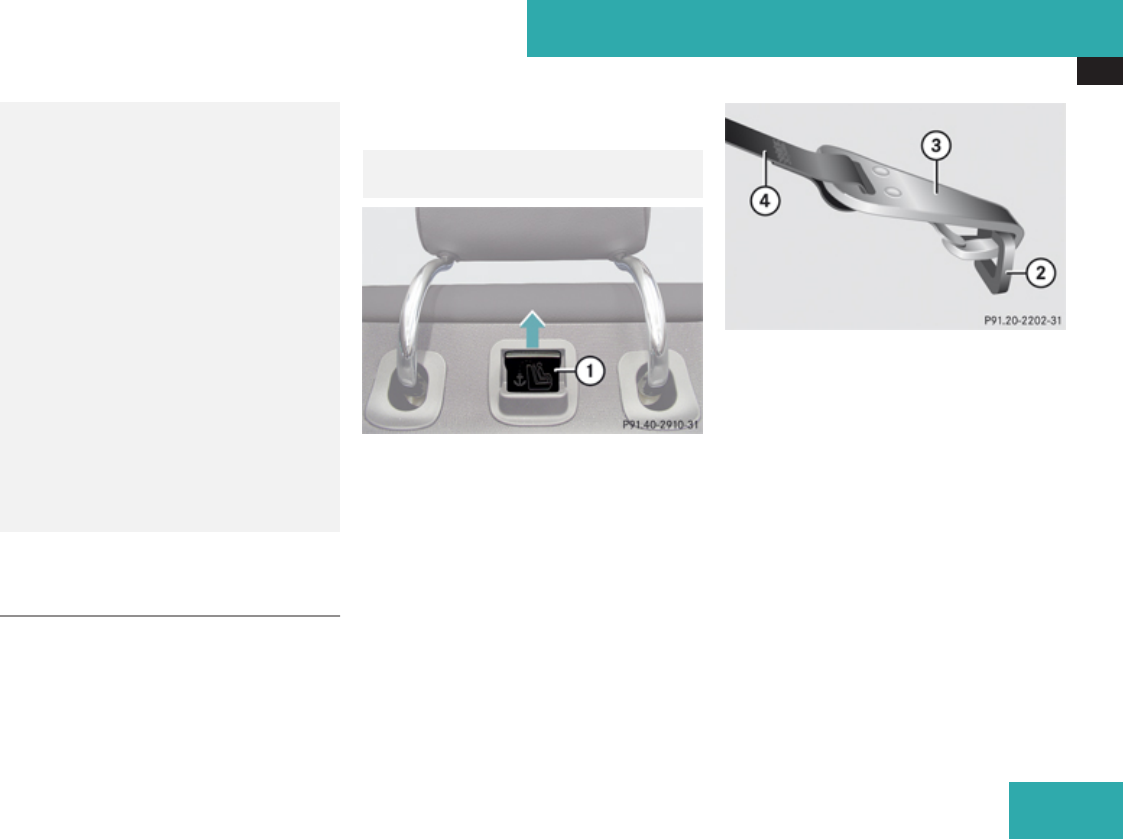
Occupant safety
61
A child’s risk of serious or fatal injuries is
significantly increased if the child restraints
are not properly secured in the vehicle
and/or the child is not properly secured in
the child restraint.
Children too big for a toddler restraint must
ride in seats using regular seat belts. Posi-
tion shoulder belt across chest and
shoulder, not face or neck. A booster seat
may be necessary to achieve proper seat
belt positioning for children over 41 lbs
until they reach a height where a lap/
shoulder belt fits properly without a boos-
ter.
When the child restraint is not in use,
remove it from the vehicle or secure it with
the seat belt to prevent the child restraint
from becoming a projectile in the event of
an accident.
Installation of infant and child restraint
systems
This vehicle is equipped with tether ancho-
rages for a top tether strap at each of the rear
seating positions.
Top tether straps enable an additional con-
nection to be made between child restraint
systems secured with LATCH-type anchors
and rear seats. This can further reduce the
risk of injury.
G
Observe Safety notes, see
page 59.
1
Anchorage ring cover
X
Remove anchorage ring cover 1 from the
anchorage ring of the seat on which a child
seat is to be installed.
X
Store anchorage ring cover 1 in a conven-
ient place (e.g. glove box).
2
Anchorage ring
3
Hook
4
Top tether strap
X
Guide top tether strap 4 between head
restraint and top of the seat backrest.
The head restraint must be positioned such
that the top tether strap 4 can pass freely
between the head restraint and top of the
seat backrest.
X
Make sure top tether strap 4 is not
twisted.
X
Securely fasten hook 3, which is part of
top tether strap 4, to anchorage ring 2.
i
For safety, make sure hook 3 is attached
to anchorage ring 2 beyond the safety
catch, as illustrated.
Safety and security
Z


















